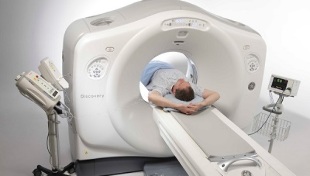
Thoracic osteochondrosis is rare, but it can cause many complications. A complete diagnosis is important in order to make an accurate diagnosis. Treatment must be timely and complete. Preventive measures will help prevent the development of said disease.
Osteochondrosis of the thoracic spine is a degenerative disorder of the cartilaginous structures. Without timely and competent treatment, osteochondrosis can cause various complications, so it cannot be ignored. Preventive measures will help to avoid such a pathology.
General characteristics of the disease
Osteochondrosis is a fairly common lesion of the musculoskeletal system, but it rarely affects the thoracic region compared to other parts of the spine. This is due to the fact that this part of the spine is the least mobile, thus experiencing the least stress.
This feature is the danger of the disease - its symptoms are less pronounced, so patients go to the doctor with advanced osteochondrosis.
The disease is characterized by the development of degenerative and dystrophic processes. They cause pathological changes that affect bone and cartilage tissue. If left untreated, the pathology changes the structure of the ligaments, intervertebral discs and joints, causing their destruction.
With the development of osteochondrosis, bone structures are affected first, then the pathological process spreads to cartilaginous structures, muscles and connective tissue. At an early age, such pathological changes provoke premature aging of the body.
Classification
The pathology is characterized by a gradual progression, therefore, there are four stages (degrees), each of which is characterized by certain clinical manifestations and complications:
- The first stage usually involves rupture of the intervertebral disc, which can cause excessive stress or sudden movement.
- In the second stage, the bulging of the intervertebral discs is observed. In this case, the disc protrudes into the intervertebral canal; the bump is usually no larger than half a centimeter. In this stage, instability of the spine develops.
- The third stage of osteochondrosis is characterized by an increase in the intensity of clinical manifestations and is often accompanied by an intervertebral hernia.
- The fourth stage of the disease is called the most serious and dangerous. At this stage, osteophytes appear. Its proliferation puts pressure on the spinal cord and nerve endings.
Reasons
Osteochondrosis can develop at any age. The risk of it happening is not related to gender.
The disease often develops in the context of the following factors:
- age: people who have crossed the 40-year mark are at risk;
- various pathologies of the spine, including curvature of the spine;
- hereditary predisposition;
- trauma resulting in damage to the intervertebral discs;
- chronic stress;
- hypothermia;
- hormonal imbalance, material metabolism;
- altered blood circulation in the thoracic region;
- characteristics of the professional activity that create a greater load on the thoracic region.
Symptoms of osteochondrosis of the thoracic spine
The disease can have several symptoms and sometimes it manifests itself in an unusual way. Most often, the pathology is expressed by the following signs:
- Pain. This symptom is the main one. Painful sensations usually arise when the body is in one position for a long time, physical exertion, lifting weights. As the pathology progresses, the pain can also be observed at rest and intensifies due to any movement. She may be bored or in pain.
- Smash in the middle of the back. In this case, it is more difficult for a person to breathe. Pain is felt when inhaling or exhaling deeply.
- Some parts of the body go numb.
- There may be chills and goose bumps.
- The local temperature in the legs is decreasing.
- Itching and burning may be felt in the lower extremities.
- If the pathology affects the cardiovascular system, causing a malfunction, this can be accompanied by peeling of the skin, thinning of the nail plates and increased fragility of the nails.
- With the progression of osteochondrosis, the work of the organs of the gastrointestinal tract is disrupted, which can lead to a wide range of symptoms: nausea, heartburn, flatulence, diarrhea, constipation, painful sensations in the abdomen.

Pain is one of the main signs of thoracic osteochondrosis, but it can manifest itself in completely different ways. In some cases, back pain is observed - painful sensations arise in the affected area and continue for a long time. In other cases, back pain occurs: the pain manifests itself intensely and acutely, arises in paroxysms, constricts the muscles, and interferes with breathing.
The clinical picture of osteochondrosis largely depends on its stage:
- In the early stage of the disease, a ruptured intervertebral disc is usually seen. This phenomenon is expressed by severe pain and muscle tension. The sensations recall the effect of an electric current, the discharge of which seems to pass through the column.
- In the second stage, a protrusion can be observed, which is accompanied by pain in the thoracic region, which can also affect the internal organs.
- In the third stage of the pathology, pain is more frequent. It becomes more difficult for the patient to breathe, headaches appear. The disease can slightly interrupt the work of the heart.
- In the fourth stage, due to compression of the nerve roots, intercostal neuralgia may develop. In this case, a sharp pain in the chest occurs. At first, it affects only one area, but then it spreads over the entire chest. This makes breathing difficult. The patient sometimes cannot change the position of the body, the pain during various movements intensifies many times, it can be unbearable. Due to severe pain, the pupils may dilate.
The symptoms of osteochondrosis of the thoracic region usually increase at night, which is associated with a prolonged stay of the body in a horizontal position. After waking up, the symptoms become less severe or disappear completely, but sudden movements or low body temperature can make them worse.
Atypical manifestations of thoracic osteochondrosis include the following symptoms:
- Painful sensations in the region of the heart. Such a manifestation raises suspicion of a heart attack or angina pectoris. Sometimes this symptom lasts for several weeks.
- Concentration of pain in the abdomen, causing severe discomfort in the gastrointestinal tract. This symptom increases with physical activity.
- Sharp, spastic pain in the upper abdomen. This symptom is characteristic of gastritis, pancreatitis, cholecystitis.
- In women, an exacerbation of the disease can cause a pulling on the mammary glands. In this case, there are suspicions of a malignant neoplasm.
- Violation of the genitourinary organs.
- If pathological changes are concentrated in the upper thoracic region, pain may affect the esophagus or pharynx. Patients in this case complain of the sensation of a foreign object in the throat.
Only a doctor can make a diagnosis. Thoracic osteochondrosis is accompanied by many symptoms that are also characteristic of other pathologies. A qualified specialist will be able to understand all the nuances of the clinical picture.
Diagnosis
The doctor can make a preliminary diagnosis already at the stage of the initial examination of the patient. Usually a neurologist deals with the problem of osteochondrosis. The doctor examines the spine in various body positions.
To confirm the diagnosis and identify the characteristics of the pathology, they resort to instrumental diagnostics. The basic study is X-rays.

In addition, the following measures can also be applied:
- computed tomography;
- magnetic resonance imaging;
- scintigraphy;
- discography;
- electromyography.
They also resort to laboratory diagnostics. It may consist of general and biochemical blood and urine tests. Such studies are carried out for the purpose of differential diagnosis, revealing the characteristics of the pathology and associated complications.
Diagnosis is necessary not only to confirm the diagnosis, but also to differentiate osteochondrosis from other pathologies. With its atypical course, the clinical picture may resemble other pathologies that cannot even be associated with the thoracic region.
Treatment of osteochondrosis of the thoracic spine
The disease requires complex treatment. It involves not only the use of drugs, but also various methods of physiotherapy, physical therapy exercises, massage.
During an exacerbation of the disease, bed rest is required. Mobility should be limited as much as possible. Often the pain syndrome is so strong that the patient calls an ambulance. Treatment in this case is carried out in a hospital setting.
Restrict movement during treatment. When bed rest is no longer necessary, you can walk, but long walks are prohibited. Walking should alternate with rest. You also shouldn't sit in one position for a long time.
When the disease is advanced, they resort to traction. This technique consists of stretching the spine. This allows you to increase the distance between the vertebrae, reduce the size of the intervertebral hernia, and activate the nutrition of the intervertebral discs.
Drug therapy
Various medications for breast osteochondrosis are used to relieve pain, muscle tension, and improve blood supply. For these purposes, the following medications may be prescribed:
- The basis of drug therapy is usually non-steroidal anti-inflammatory drugs, which relieve pain and eliminate inflammation. Such drugs are prescribed in the form of ointments and gels for external use, tablets and capsules for oral administration, solution for injection. Therapy may involve the simultaneous use of several forms of drugs from the same group. The therapeutic course usually lasts 1-2 weeks.
- For severe pain, use glucocorticosteroids. Usually, the drugs are used for intramuscular injections or applications through physical therapy.
- Pain relievers are also used for severe pain.
- In case of excruciating pain, they resort to medication blocks. Locks are performed strictly according to indications in a hospital setting.
- Topical irritants can help reduce pain. They can be based on natural ingredients: hot pepper extract, bee or snake venom.
- To restore blood circulation to the affected area, intramuscular injections of nicotinic acid are prescribed.
- Muscle relaxants are used to relieve muscle tension.
- After stopping the exacerbation of the disease, drugs are often prescribed to activate metabolic processes and restore cartilage structures. This effect is provided by chondroprotectors. These drugs involve a long therapeutic course that takes several months.
Only a doctor can prescribe the necessary drugs in a particular case. It is necessary to determine the duration and scheme of taking each drug, take into account the compatibility of various medicinal substances.
Physiotherapy and massage
With thoracic osteochondrosis, physiotherapy methods allow you to get rid of pain and restore mobility. The doctor may prescribe the following treatments:
- electrophoresis or phonophoresis with drugs, including anti-inflammatories and analgesics;
- magnetic therapy;
- darsonvalization;
- paraffin wax applications;
- ozokeritotherapy;
- balneotherapy;
- ultrasound;
- mud therapy;
- UHF therapy.

Special attention should be paid to massage for thoracic osteochondrosis. In the treatment of this pathology, the following techniques may be involved:
- Classic.In this case, the massage consists of stroking, kneading, pinching, rubbing. Such treatment should be a course. A course can include up to 15 sessions, each of which does not last more than 20 minutes.
- Spot.The impact can occur on acupuncture or painful points. The movements are performed with the fingertips in a circle with a gradual increase in pressure force.
- Canned.Using cans allows you to create a vacuum, which increases blood circulation and lymphatic drainage. Cupping massage increases muscle tone, eliminates pathological reflexes, accelerates the microcirculation of various fluids in the body.
- Segmental.This massage is performed to improve blood flow to the affected area, stimulate lymphatic drainage and oxygenate the tissues.
Recovery gymnastics
Physiotherapy exercises provide an excellent effect on thoracic osteochondrosis. It should be done under the supervision of a specialist, but some exercises can be done at home:
- Warm up before recovery gymnastics. To do this, you can shower and do a little warm-up. It consists of hand movements, rotations, body twists.
- Lie on the floor, face down. Put both hands behind your head, while extending your elbows. Slowly lift your shoulders and body. Raise your right elbow first, then your left. Do 5 reps.
- In the same starting position, place your hands behind your back and hold them in the lock. Performing a push-up in your torso, raise your arms straight up without opening them. At the extreme point, you need to stop for a few seconds and gently return to your original position.
- Get down on the ground and put your hands behind your shoulders. Raise your shoulders alternately, moving your head in the same direction.
- Lie down on a hard surface, face down. Stretch your arms forward as you lift your body. Do several reps, then perform the same body lifts, but with your arms extended across your body.
- Sit on a chair and put both hands on your belt. Move the shoulder girdle, gently lifting and lowering it to its original position. At the extreme point, you need to delay a few seconds. Do 5 reps.
- This exercise should be performed with a gymnastic stick. You need to sit down and raise your arms while inhaling, holding a stick in them. As you exhale, return to the starting position and lean your body forward.
- Get down on the ground and place your hands with a gymnastic baton on your shoulders. Then tilt your body to the left and right. This exercise is contraindicated in scoliosis.
- Sit in a chair with a back, lean against it and lean back.
All exercises should be performed smoothly and slowly. Sudden movements are excluded. If an exercise is painful, you should stop doing it and get some rest. If pain persists, end the exercise and consult a doctor.
Prognosis, complications
Subject to timely detection and competent treatment of thoracic osteochondrosis, the prognosis is favorable. If the disease is neglected, life expectancy is reduced by approximately 7%.
The progression of osteochondrosis can lead to the development of other pathologies:
- bulge of the intervertebral disc when it protrudes into the intervertebral canal;
- intervertebral hernia: unlike the bulge, it involves the rupture of the fibrous ring;
- stenosis of the intervertebral canal, vertebral artery;
- radiculopathy: a complex of symptoms that occurs when the roots of the spinal cord are damaged;
- kyphosis: popularly called humpback and implies the curvature of the spine with the direction of the protrusion backwards (sagittal plane);
- pneumosclerosis;
- tiles;
- malignant neoplasms;
- sexual dysfunction.
Prevention
Any disease is easier to prevent than to stop and cure the pathological changes that have already occurred.
Compliance with the following preventive measures will help prevent breast osteochondrosis:
- Maintain a normal body weight.
- Moderate physical activity. You need to exercise regularly or exercise at least daily. The set of exercises should include elements to strengthen the muscles of the back.
- Avoid injury, physical overload.
- Maintaining the correct posture, if necessary, making your correction.
- Avoid emotional overload, stress.
- Proper nutrition.
- Elimination of bad habits.
- Correct organization of the place to sleep. It is important to correctly select the firmness of the mattress, orienting it to its individual characteristics.
- Organize the workplace properly. If the work is sedentary, then you should take care of a high-backed chair. You need to take breaks and warm up during them.
- Timely medical examinations.
- Complete and timely treatment of any pathology.
Osteochondrosis of the thoracic spine can cause various complications that negatively affect quality of life. It is necessary at the first signs of pathology to consult a doctor who will diagnose and prescribe competent treatment. All regulations must be strictly followed.























